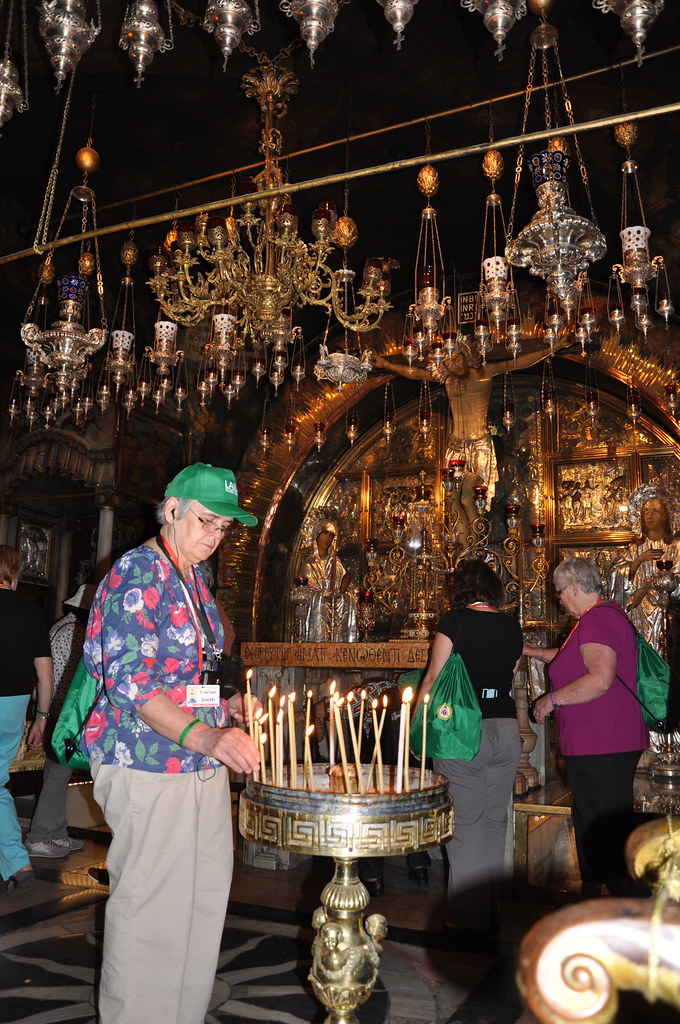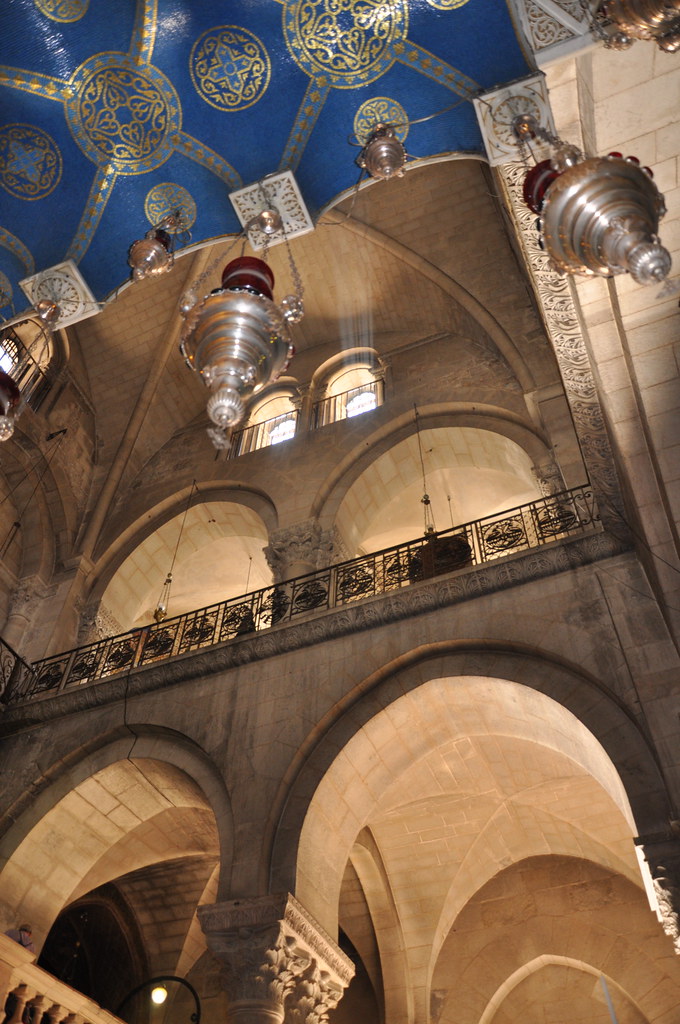Well, it has been a long and busy day and I think every pilgrim has tired legs and feet, but a real sense of being on Pilgrimage.
The Basilica of the Holy Sepulchre
The morning started with a visit to the Basilica of the Holy Sepulchre. This is an astonishing building, and might be better described as a collection of buildings given the number of reconstructions and additions that have taken place over the centuries.

The building covers some of the most important sites. It contains the site of Christ's Crucifixion: Golgotha; the place of the skull, or in Latin, Calvary. It also contains the site of Christ's tomb, it contains the stone of anointing, where it is believed that Christ would have been anointed before burial.
The Pilgrimage has been divided into two groups of about 50 each- a green group and a red group. To look around the Holy Sepulchre we divided into groups and were shown around by our guides.
The atmosphere
It is hard to describe the atmosphere of the Holy Sepulchre. Obviously a site with so much religious significance commands and awe and the building itself is impressive. However, the sheer number of people, tourists, pilgrims and visitors mean that it can be easy to forget this is a revered space when so many people are jostling next to each other.
The site of Golgotha is raised and you have to ascend some very steep steps in order to get to it. Over the site there are two altars, a Catholic altar to the left and a Greek Orthodox altar to the right.
Under the Greek Orthodox altar is the rock on which Christ was crucified, and by stooping and being careful not to bang your head on the altar above, you can reach inside a space and touch the rock. Being from England our group soon formed an orderly queue in order to experience this one at a time.

One pilgrim described how this was much better than the experience last year which I gather had consisted of the jostling and body of pilgrims described above. Another pilgrim told me how she had found it a moving experience, albeit a brief one, and had said that it was a perfect opportunity to pray "Jesus remember me when you come into your Kingdom" as she touched the rock.
After descending the very steep steps, we then looked around the basilica further. The whole site is shared by six Christian denominations, each having it's own area.
The six are the Armenians, the Greek Orthodox, the Egyptian Copts, the Syrian Orthodox, the Ethiopians and of course, the Catholics, and more specifically the Franciscans.
The entire site is now one building but it was originally three churches; each built over a particular holy place. These three churches were destroyed and rebuilt at the time of the crusades and one church instead was built over all the sites.
Post 11am
All of this information to take in all occurred before 11am! After 11am we made our way through the streets of Old Jerusalem to St Anne's Church and the Pools of Bethesda. St Anne's Church is traditionally the birthplace of Our Lady. 
There was not much time to go into the Church but we gathered outside and Fr John Hemer led a scriptural reflection on the importance of Jesus' miracle at the pools of Bethesda where he cures a paralytic. Fr John focused on Jesus' warning to the healed man later when he says: "Go and do not sin any more lest something worse happen to you." Fr John explained that while Jesus worked a miracle on this man, it does not have the same trans formative effect on the faith of the man as most of Jesus' other miracles do. It is therefore a warning about the nature of faith. If our hearts are not truly moved to follow Christ then Christianity can become a series of rules and regulations. While it is always good to follow these, they are supposed to have a& transformative effect and to set one free to live in Christ as he wants us to.
After a prayer in honour of the nativity of Our Lady led by the Archbishop we took brief look in the Church before winding our way back through the streets of Jerusalem to the Austrian Hospice where we were treated to lunch and glorious views of the city. It was only from here that I realised quite how close many of the sites are to each other. We also got an idea of the route and length of the Way of the Cross or Via Dolorosa which we prayed in the afternoon.
See more pictures here




